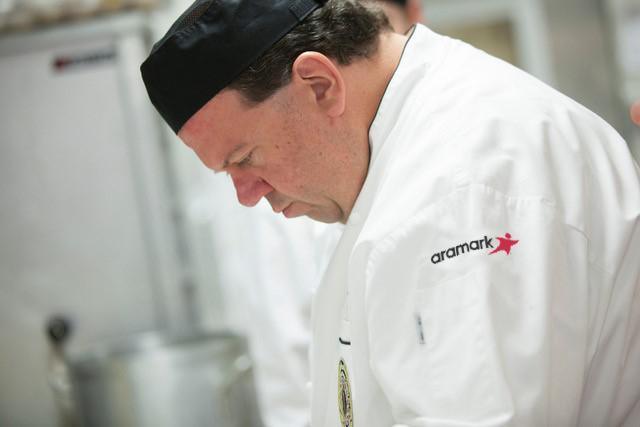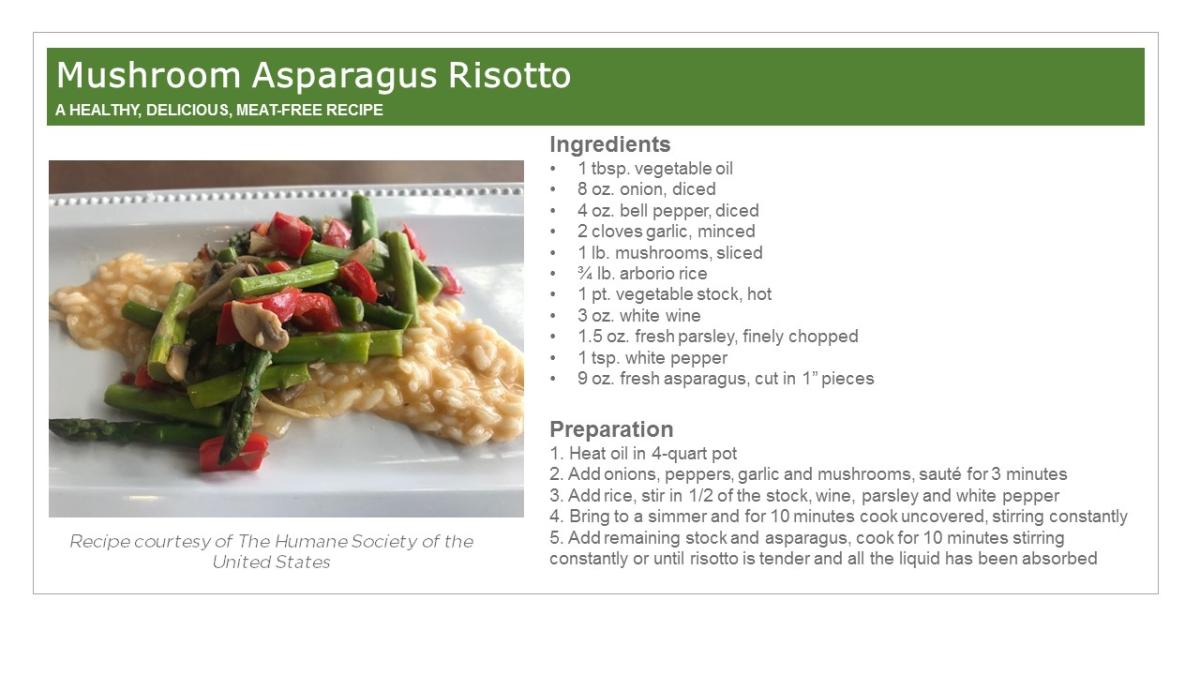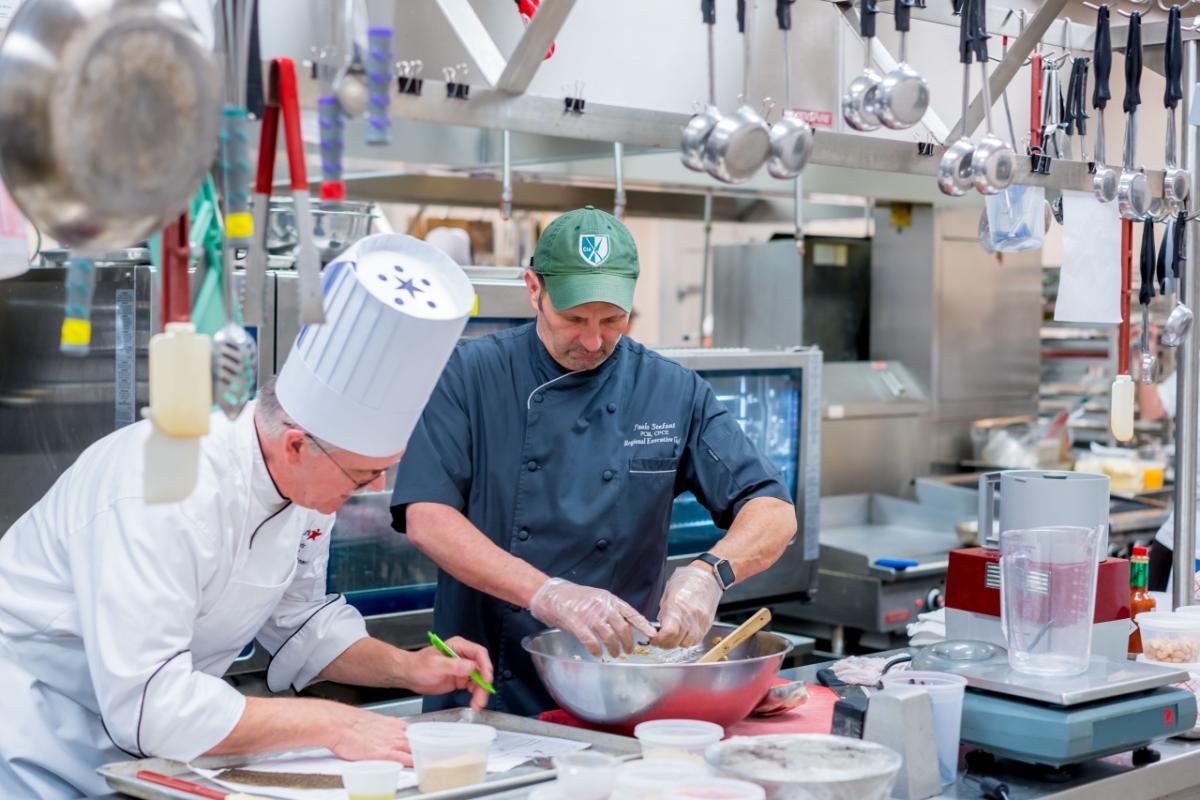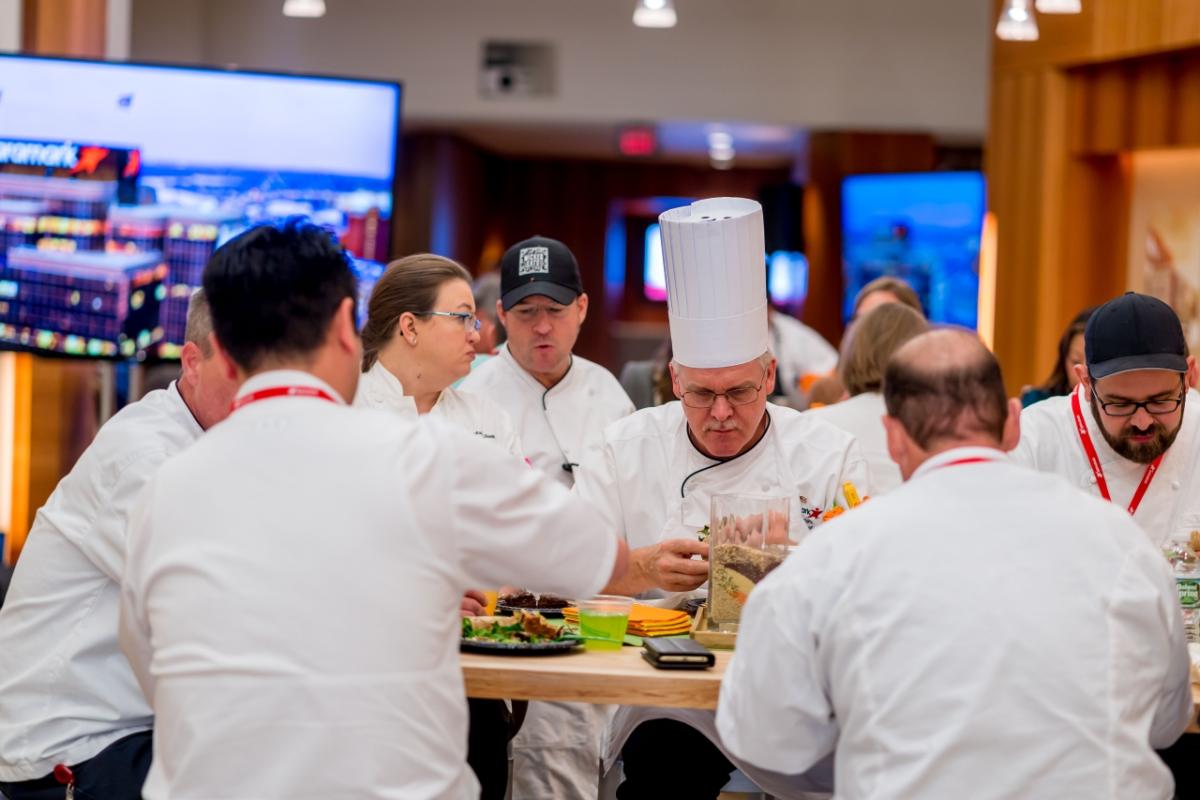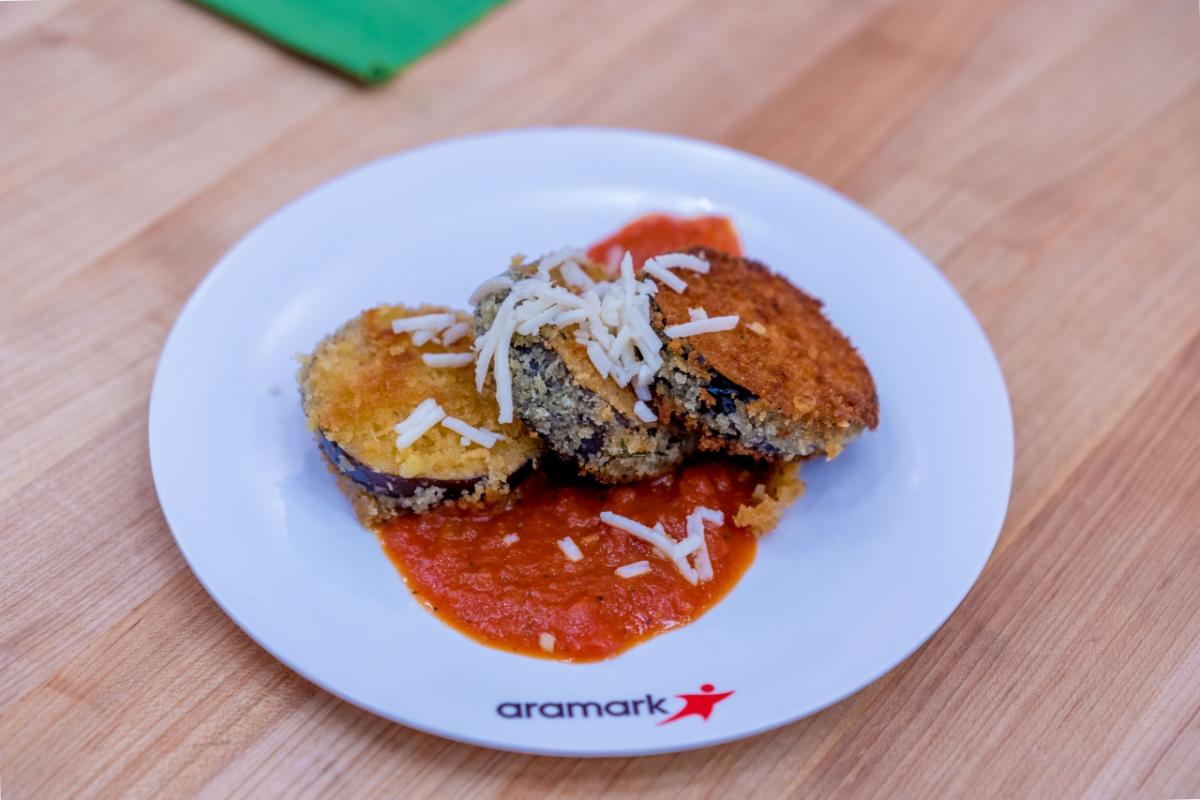Honoring the Earth With a Plant-Forward Journey: Q & A With Aramark's Chef David Leicht
In partnership with The Humane Society of the United States (HSUS), Aramark is conducting a series of plant-based culinary trainings for chefs like David Leicht, Certified Executive Chef (CEC), American Academy of Chefs (AAC) and Regional Culinary Director for the Mid-Atlantic Region. In this Q & A, David talks about his plant-forward journey.
Tell us a little about your culinary background.
DL: I’ve been in the industry over 30 years. I started in high school, working in a hospital kitchen to make some extra money. About a year in to the job, my boss asked me if I wanted to learn to cook, because if I did, I’d get more hours and make more money. That’s all they needed to say. I started cooking, and fell in love with it. I studied hotel management, and attended the Culinary Institute of America (CIA), then worked in as many different environments as possible.
How long have you been interested in plant forward menus?
DL: I first became aware of plant-forward cooking through the CIA. I attended their Menus of Change summit and I was intrigued by the concept of healthy, sustainable, delicious food choices. I was blown away by the revolution that followed – an amalgamation of physicians, healthcare professionals, business and culinarians were all involved.
I’ve continued to attend over the years and I’ve seen the growth and innovation in this style of dining and its impact on the Earth. We need to ask ourselves how we will properly feed our population as it grows -- the water we need to raise animal proteins and grow produce will become much more of a concern.
What has Aramark’s plant-forward journey been?
DL: Aramark is insight driven, and we’ve been seeing higher percentages of consumers asking for healthy options. As we read into the verbatims from our customers, we saw that they were specifically looking for more vegetarian and vegan options. We also began to hear feedback that they were looking for more creativity, and innovation in these offerings and we started to think about creating vegetarian/vegan stations and menu cycles. That propelled the dialogue with our Aramark Culinary Innovation Center on how we could align.
In addition to the health aspects of a plant-forward menu, what have we heard from consumers in regard to the environmental sustainability aspects?
DL: Students in our Higher Education locations in particular have a real passion for transparency in sourcing. They want to know if something is fair trade, grown with respect for the environment, and respect for the seasons. Flying in strawberries at certain times of the year, for example, means adding to our carbon footprint.
There’s also a lot of information out there about animal proteins versus plant proteins, and while that’s not the center of the dialogue yet, I do think it will become a dominant topic. In the meantime, I’d like to see the vegan and vegetarian cuisine be viewed more as just a delicious dish that doesn’t happen to have animal protein.
What’s the process for getting to that dish?
DL: It starts with “Does it taste good?” You have a canvas to paint and you’re free to be creative – in your ingredients, in your preparation, in the nutritional aspects. But it's also really important that we partner with our dietitians on the nutritional aspects and our supply chain experts on responsible sourcing. It’s not only about the culinary part of the dish.
What's the next big thing in plant-forward dishes?
DL: Lots of protein sources are out there – from tofu to tempeh, seitan, jackfruit, beans, barley, farro, almonds. Finding these, and doing a protein flip is critical. Another approach is to make the vegetable, grain and bean the star of the plate, with just a small portion of animal protein.
I love using aquafaba -- bean water. It whips like meringue, and you can use as a basis for a vegan mayonnaise, or dessert. I’m also wowed by nutritional yeast – it’s a deactivated yeast flake, that’s nutty, and creamy.
How important are partnerships in culinary innovation on plant-forward menus?
I think our collaboration with the American Heart Association really propelled us forward. Our work with the Humane Society of the United States speaks to our commitment. We’re sending chefs to workshops to learn more about plant-forward techniques, and that’s a tremendous statement that we are investing in our culinary leadership.
What’s on the horizon for Aramark and plant-forward menus?
When it comes to plant forward, it’s not about a particular technique or ingredient, it’s more of a continuation of awareness and insight-driven dialogue with the consumer. If the plant-forward movement is going to sustain itself, we need to become more aware of better agriculture practices that respect the Earth. We need to think in terms of more global strategies, like whole foods and less processed food.
What would you suggest to people who are just getting started on their own plant-forward journey?
DL: Learn more about vegetables, grains, and legumes. And start by adding smaller amounts of animal proteins – try two shrimp on some farro, with fresh tomatoes and cucumbers.
Try one of David’s favorite plant-based recipes, Mushroom Asparagus Risotto.

